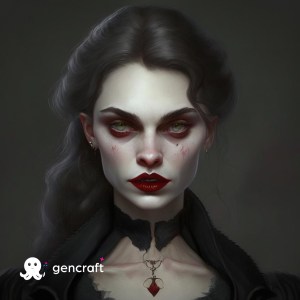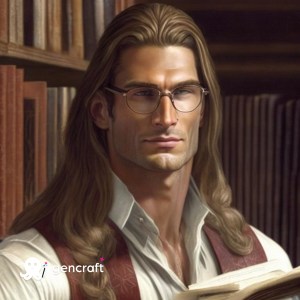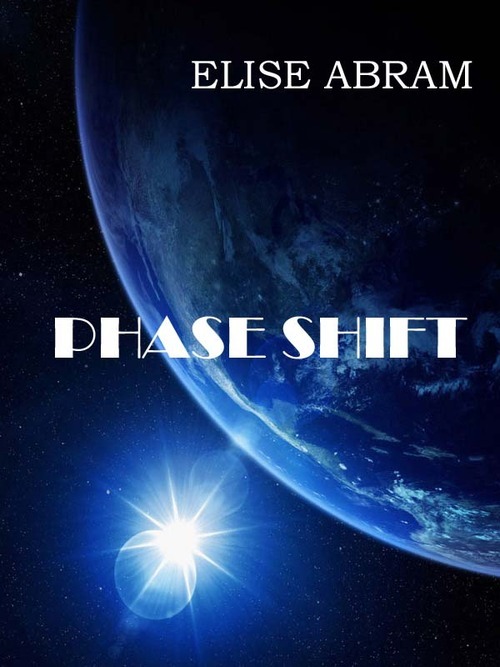This blog post represents my entry in the “Overcoming Writer’s Doubt” Writing Contest held by The Positive Writer.
[Tweet “Read Elise Abram’s entry in the “Overcoming Writer’s Doubt” #Writing #Contest.”]
“I wish I could write like that,” I said to my husband. We were in the car heading home from the theatre having just seen “The Mummy Returns.”
“You can,” he told me, and for the first time, I shared the story that had been tumbling around in my head for the twenty or so years prior.
The rest of that summer was spent in the eye of a perfect storm of creative fury, spurred on by my love for science fiction, the abundant resources of the Internet, and the fact that I had been tasked to teach Writer’s Craft that coming September. As I researched the finer points of structuring plot, character, imagery and theme while preparing my lessons, the trickle of words I’d only ever been able to muster soon became a deluge. In my dreams I saw my novel on the shelves of bookstores and on bestsellers’ lists worldwide.
Nearly ten years passed before my masterpiece was complete and I was ready to shop for the perfect venue for my book. Back then, few publishers and agents were accepting submissions via email. Printing out my novel and mailing it was cumbersome, not to mention expensive. I soon succumbed to doubt and gave up on my writing career before it had even begun.
Then the next idea took root.
I ignored it at first, reluctant to take another ride on the writing roller coaster. Before long, the incessant chatter of the characters could not be silenced by anything other than my transcribing their story.
[Tweet “I ignored the idea, reluctant to take another ride on the #writing roller coaster.”]
Five years later Phase Shift was finished. A few more publishers and agents were accepting unsolicited manuscripts than before, but not many. After a year of fighting the good fight, and another twenty or so rejections added to my pile, I realized my submissions had amounted to nothing more than expensive lottery tickets. Actually, I’d convinced myself, I probably had a better chance of winning the lottery than getting published.
I took time to lick my wounds, wallow in writer’s doubt and decide if the writing life truly was for me.
I was teaching grade ten English at the time. Over a period of about three years, I’d listened to near a thousand student presentations on young adult novels. Every semester my awe at the torture YA novelists foisted on their characters grew; global apocalypse, false accusation, abuse, addiction, pregnancy, murder–no topic was sacred.
In my discussions with them, the librarians at my school encouraged me to write YA. At first, I had no clue where to begin. I’d always wanted to write a vampire story, I thought, so I began where I’d begun almost every project I’d ever tackled–doing research. It was during the research phase I discovered revenants, kissing cousins to vampires in traditional lore. I soon realized I’d stumbled upon an untilled field of possibility. As little was known about revenants, I could shape them into almost anything I wanted.
Coincidentally, Nanowrimo was not far off that year. If I could force myself to stick to the regimen the contest demanded, I could bang out most if not all of my first draft in as little as thirty days. In spite of the demands of my job and my family, I “won” Nanowrimo and spent most of the next six months finishing and polishing my manuscript.
I felt good. I’d written my best work yet. I was going to be published by a traditional publishing house, but not before a knock-down drag-out bidding war between publishing bigwigs for the rights to my book. I was going to be the next Stephanie Meyer! The next J.K. Rowling! Bigger!
And then I began to send out queries.
When the responses started to roll in, elation was replaced with the first buds of writer’s doubt.
[Tweet “When the responses started to roll in, elation was replaced with the first buds of #writer’s doubt.”]
“Your book doesn’t seem right for us.” I could deal with this kind of rejection; the problem wasn’t me, it was them. I soldiered on, but with each successive rejection I started to realize maybe the problem was me. What if It was worse than me? What if it was my writing? I could always change a plot or write a new story, but if my writing was the problem…?
With each new rejection it became harder to navigate the waters of the river of writer’s doubt without slipping under.
I decided to focus on my next novel (which I tentatively titled I Am, Was, Will Be Alice), allowing The Revenant to stew on the back burner for a while. I liked my Alice novel. I liked The Revenant, too, but if it wasn’t meant to be then I’d have to write another magnum opus and try again. I believed in The Revenant, even if no one else did. I took a course on how to market a book, resolving to self-publish and run with it myself if no one had picked it up by the summer.
Then the gloriously unthinkable happened: one of the publishers I’d contacted was interested in publishing my book. A week after I’d heard the news I’d signed the contract. The stormy waters of self-doubt settled, the clouds parted, the sun came out. I might have heard harp music and choral angels sing.
I was going to be published!
I’m not going to lie and say I’ve managed to permanently banish writer’s doubt from my life. As long as my success hinges on how well others receive my work those thin tendrils of writer’s doubt, the ones that threaten to take root and sprout buds will always be there.
Let’s just say I’ve managed to prune back the branches for the time being.
The Revenant, a YA paranormal adventure novel by Elise Abram is set for a 10 July 14 release by Black Rose Writing.
[Tweet “Watch for The Revenant by Elise Abram, released on July 10 by Black Rose Writing.”]













 NaNoWriMo begins tomorrow. I am enjoying participating in the online forums on their web page at
NaNoWriMo begins tomorrow. I am enjoying participating in the online forums on their web page at  English teacher and former archaeologist Elise Abram is proud to announce the release of PHASE SHIFT, her first fiction publication. Abram has been writing ever since she can remember, but it wasn’t until she was asked to teach Writer’s Craft in 2001 that she began to write seriously. Having to research writing and the writing process gave her the confidence she needed to actually put proverbial pen to paper. Her first novel, THE GUARDIAN was partially published as a Twitter novel a few summers back. Nearly ten years after its inception Abram decided it was time to stop shopping around with traditional publication houses and try to publish PHASE SHIFT on her own.
English teacher and former archaeologist Elise Abram is proud to announce the release of PHASE SHIFT, her first fiction publication. Abram has been writing ever since she can remember, but it wasn’t until she was asked to teach Writer’s Craft in 2001 that she began to write seriously. Having to research writing and the writing process gave her the confidence she needed to actually put proverbial pen to paper. Her first novel, THE GUARDIAN was partially published as a Twitter novel a few summers back. Nearly ten years after its inception Abram decided it was time to stop shopping around with traditional publication houses and try to publish PHASE SHIFT on her own.